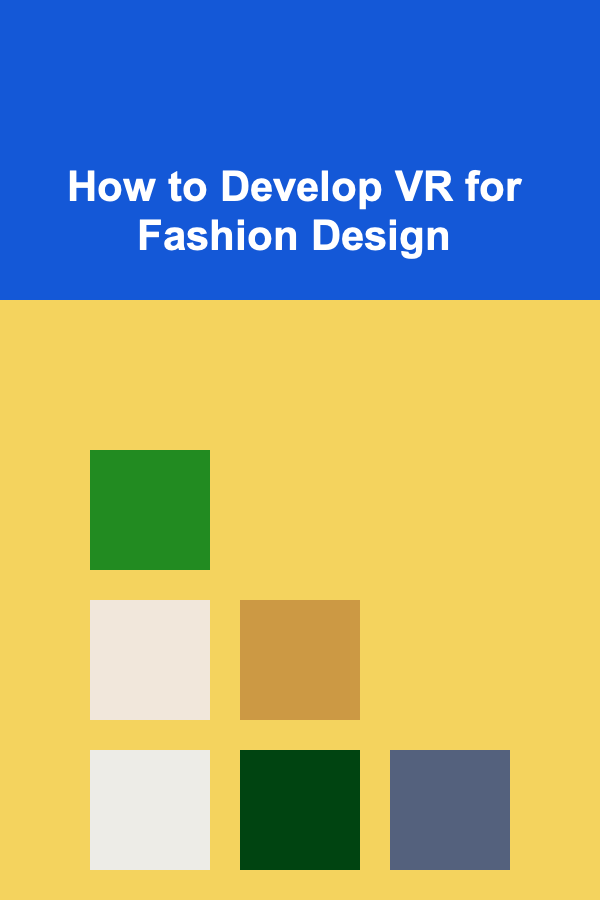
How to Develop VR for Fashion Design
ebook include PDF & Audio bundle (Micro Guide)
$12.99$8.99
Limited Time Offer! Order within the next:

Virtual Reality (VR) is a powerful tool that has revolutionized many industries, from gaming to healthcare. In recent years, the fashion industry has also begun to embrace VR technology. The application of VR in fashion design is becoming increasingly popular as it provides designers with innovative tools to create, visualize, and experience fashion in ways that were previously unimaginable. This article explores how VR can be developed for fashion design, offering a comprehensive guide on how to integrate this cutting-edge technology into the fashion design process.
The Role of VR in Fashion Design
Virtual reality has immense potential in the fashion industry, particularly in the design process. Traditionally, fashion designers relied heavily on physical prototypes, sketches, and fabric samples to visualize their creations. However, VR has transformed how designs are conceptualized, developed, and brought to life. It allows designers to work in a fully immersive environment where they can interact with 3D models, try out different textures and colors, and simulate the behavior of garments in real time.
By leveraging VR, fashion designers can streamline the creative process, reduce the need for physical prototypes, and create more sustainable designs. They can visualize garments in 3D, try out different designs without having to create new samples for each variation, and even preview how fabrics and materials will react when worn by a model. The introduction of VR into fashion design not only enhances creativity but also reduces costs and time associated with traditional design methods.
Understanding the VR Development Process for Fashion Design
Developing a VR experience for fashion design involves multiple stages, from conceptualizing the idea to building and testing the final application. Below is an overview of the core steps involved in developing VR for fashion design.
2.1. Conceptualization and Planning
Before diving into the technical aspects of VR development, it's essential to have a clear vision of what the VR fashion design experience will offer. This initial phase involves collaborating with fashion designers, developers, and other stakeholders to outline the scope and features of the VR application. Key questions to address during the planning phase include:
- What design aspects will be showcased? VR can be used for garment creation, 3D modeling, fitting simulations, and even runway presentations. Deciding which aspects of fashion design will be incorporated is the first step in shaping the VR experience.
- Who is the target audience? The target audience will influence the design of the VR experience. Is it intended for professional designers, students, or consumers? Different audiences will have different needs and expectations when interacting with the VR platform.
- What are the technical requirements? Understanding the hardware, software, and platform limitations is crucial in developing an effective VR experience. Whether you're developing for Oculus, HTC Vive, or other VR systems, it's essential to define the platform and hardware before proceeding.
2.2. 3D Modeling and Design
Once the planning phase is complete, the next step is creating the digital assets that will populate the VR environment. In the case of fashion design, this means creating detailed 3D models of garments, fabrics, textures, and accessories. Fashion design studios often use specialized software like CLO 3D, Marvelous Designer, or Blender to create these assets.
- Garment Modeling: The first step in developing a VR fashion design experience is modeling the garments themselves. Designers use 3D modeling software to create detailed, accurate representations of clothing items. These models need to be highly detailed, including stitching, fabric texture, and any other design elements. The 3D models must be optimized for VR, meaning they should be detailed enough to provide realism but not so complex that they slow down performance.
- Fabric and Texture Simulation: One of the key advantages of VR in fashion design is the ability to simulate how fabrics will behave in real-world scenarios. Virtual fabrics can be created in modeling software, with different materials such as cotton, silk, leather, and denim each having unique properties. Developers must ensure that these fabrics react to movement and light in a way that mimics reality, providing an immersive experience for the user.
- Textures and Color Matching: Textures and colors must be applied carefully to ensure that the virtual garments look realistic. Lighting plays a critical role here, as it can affect the appearance of colors and textures in VR. Developers must use lighting setups that accurately replicate how clothing would appear in real life, ensuring that colors match the designer's vision.
2.3. Integration of VR Technology
With the 3D models ready, the next step is integrating them into a VR platform. This is where the technical aspects of VR development come into play. VR platforms have different requirements depending on the hardware being used, so it's essential to understand the nuances of the platform you are developing for.
- VR Engines and Platforms: Platforms like Unity and Unreal Engine are popular choices for VR development. Both offer robust tools for building VR applications, including support for VR-specific features such as head tracking, hand controllers, and stereoscopic 3D rendering. Unity is often favored by developers for its user-friendliness, while Unreal Engine offers high-end graphical capabilities, making it ideal for high-fidelity fashion design VR experiences.
- User Interaction and Navigation: A key element of any VR application is how users interact with the environment. For fashion design, this includes the ability to rotate, scale, and manipulate 3D garments in the virtual world. Users should be able to zoom in on details, change colors or textures, and interact with different parts of the garment. Implementing intuitive controls for navigation is crucial to the success of the VR experience.
- Movement and Gesture Recognition: Incorporating gesture controls and movement tracking in VR can significantly enhance the user experience. For example, designers can use hand gestures to modify the design, choose different fabrics, or view garments from different angles. Integrating motion-sensing technology ensures that the experience feels more natural and interactive.
2.4. Testing and Optimization
Once the VR fashion design application is built, it must be tested rigorously to ensure that it functions correctly and provides a seamless experience. Testing involves checking for any bugs, glitches, or issues with the user interface, as well as making sure that the experience is smooth and immersive.
- Performance Optimization: VR applications require a lot of computing power, especially when rendering detailed 3D models in real time. Performance optimization is key to ensuring that the VR experience runs smoothly without lag or delays. Developers need to ensure that the application is optimized for different hardware configurations, from high-end gaming PCs to VR headsets with lower specs.
- User Feedback: Once the initial tests are complete, it's important to gather feedback from designers and users who will be interacting with the VR system. This feedback can be used to make improvements, add new features, or refine existing ones. User testing ensures that the VR experience meets the needs of its intended audience and helps guide future iterations of the platform.
2.5. Deployment and Updates
After testing and optimization, the VR fashion design application is ready for deployment. It can be released to the public, whether through online stores, VR platforms, or as a standalone application. Developers should also plan for future updates, including bug fixes, new features, and improvements based on user feedback.
- Cloud Integration: Fashion designers can use cloud-based VR platforms to share their designs with clients or colleagues remotely. Cloud integration allows for collaborative design work, enabling multiple designers to work on the same project simultaneously, regardless of their physical location.
- Continuous Improvement: VR technology is constantly evolving, and so is the fashion design process. Regular updates and improvements are necessary to keep the VR experience up to date with new trends, tools, and technology in both the fashion industry and the VR space.
The Benefits of Using VR in Fashion Design
Using VR in fashion design offers a range of benefits, from streamlining the design process to reducing waste and enhancing creativity. Below are some of the key advantages:
3.1. Increased Creativity
VR allows designers to experiment with new designs and concepts without the limitations of physical prototypes. They can instantly visualize how a garment will look and move, helping them push the boundaries of traditional fashion design. VR also offers the ability to simulate the real-world behavior of different fabrics, allowing designers to explore new materials and textures.
3.2. Cost Savings
One of the most significant benefits of using VR in fashion design is the reduction in costs associated with creating physical prototypes. Designers can try out various designs and materials without having to produce physical samples, reducing fabric waste and material costs. The savings from using VR technology can be reinvested into other areas of the business, such as marketing or research.
3.3. Faster Design Cycle
VR enables faster iterations of designs. Instead of waiting for physical samples to be produced, designers can make immediate changes and see the results in real time. This speed boosts productivity and helps designers meet deadlines more effectively.
3.4. Sustainability
By using VR to design and simulate garments, the fashion industry can reduce waste associated with physical prototypes and samples. VR offers a more sustainable approach to fashion design by minimizing the environmental impact of textile production, garment manufacturing, and material waste.
3.5. Immersive Experience
For fashion designers, VR offers an immersive experience that allows them to experience their creations in a way that traditional design methods cannot. With VR, designers can walk around and examine their garments in 360 degrees, providing a better understanding of how the garments will appear in the real world. This immersive experience can also be extended to consumers, who can virtually "try on" garments before making purchasing decisions.
Challenges and Considerations in VR Fashion Design Development
While VR offers many benefits, there are also challenges to consider when developing VR applications for fashion design:
- Cost and Accessibility: VR development requires significant investment in both hardware and software. Additionally, not all designers or consumers have access to VR headsets or high-end computers, which can limit the reach of the technology.
- Complexity of Design: Developing highly detailed, realistic garment models for VR requires advanced 3D modeling skills and expertise. Designers and developers must be skilled in the tools and techniques needed to create detailed, accurate representations of garments and fabrics.
- Hardware Limitations: While VR technology has come a long way, there are still limitations when it comes to hardware. Some VR systems have limited resolution, lower frame rates, or performance issues that can hinder the quality of the experience. Ensuring compatibility across different VR platforms can be challenging.
Conclusion
The integration of VR in fashion design has the potential to reshape the way designers create, visualize, and experience fashion. By developing VR applications that allow for immersive, interactive design experiences, fashion designers can unlock new levels of creativity, reduce costs, and contribute to a more sustainable future for the fashion industry. While there are challenges to overcome, the benefits of VR in fashion design make it a promising tool for the future of the industry. As technology continues to evolve, we can expect VR to become an even more integral part of the fashion design process, offering new ways for designers to experiment, innovate, and connect with their audiences.
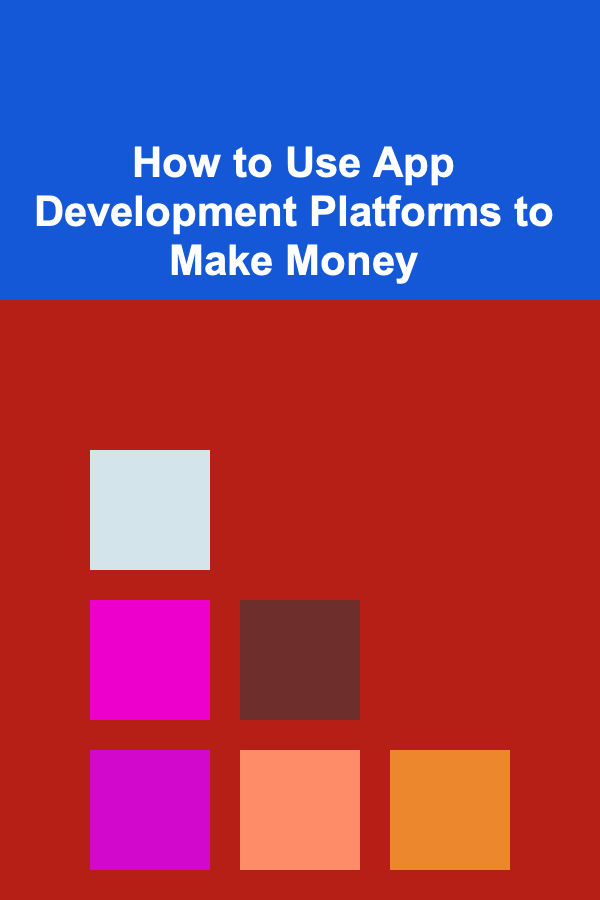
How to Use App Development Platforms to Make Money
Read More
How to Use Color to Enhance Your Home Staging
Read More
How to Cook Your Own Meals While Traveling
Read More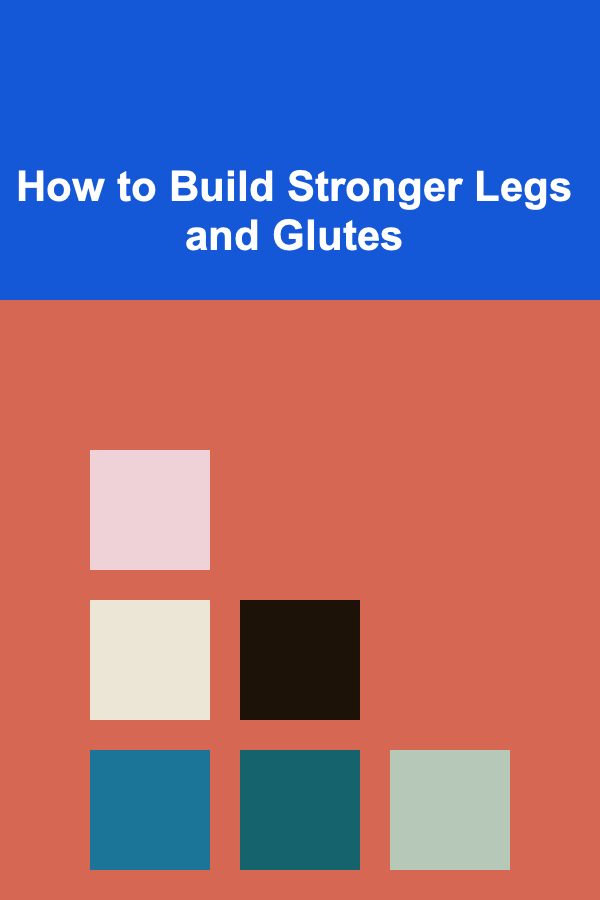
How to Build Stronger Legs and Glutes
Read More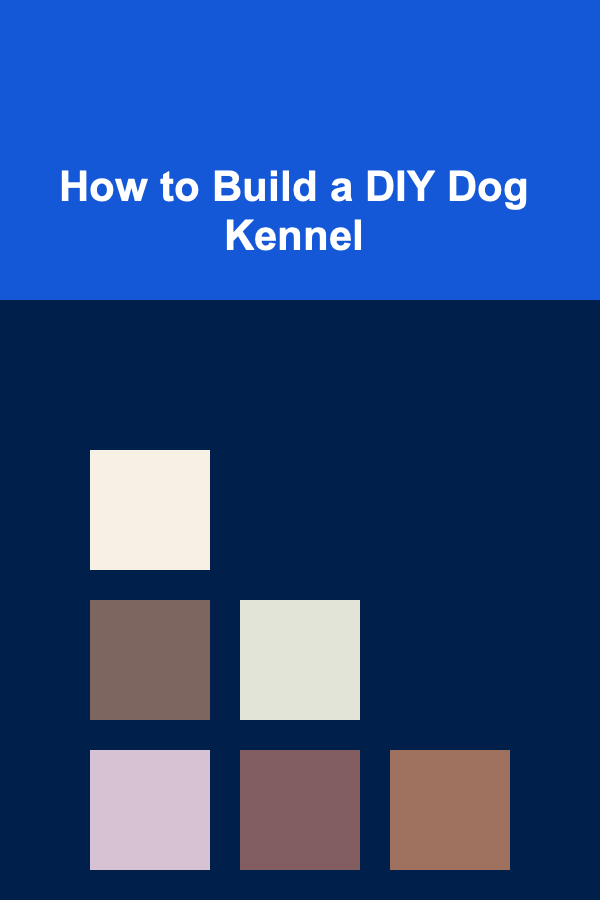
How to Build a DIY Dog Kennel
Read More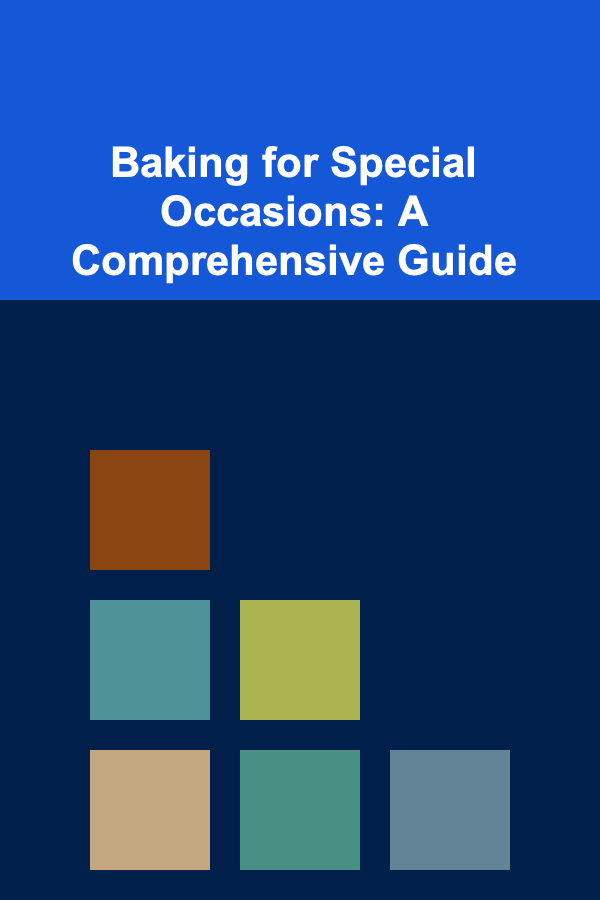
Baking for Special Occasions: A Comprehensive Guide
Read MoreOther Products

How to Use App Development Platforms to Make Money
Read More
How to Use Color to Enhance Your Home Staging
Read More
How to Cook Your Own Meals While Traveling
Read More
How to Build Stronger Legs and Glutes
Read More
How to Build a DIY Dog Kennel
Read More